Guidehouse
How can commercial & industrial users reduce their impact on the grid during their electrification process? How are you seeing utilities manage this increase in demand across the board?

Danielle Vitoff: Large C&I users are experiencing increased pressure to decarbonize their operations from customers, environmental stakeholders, and investors while having access to more financial incentives geared toward accelerated deployment of clean energy. The impact of these trends is pointing to a tipping point for industrial decarbonization and a substantial growing demand for clean electricity. If managed incorrectly, this demand growth could have detrimental effects on all electricity system users.
As large C&I users consider their decarbonization strategies, they should work with their energy providers to consider their sites' unique needs and opportunities. The specifics of each user's connection point to the grid and loads served may result in very different solution portfolios being viable options. In most cases, industrial users and energy providers working together to develop decarbonized solutions can provide increased value. Examples include:
Developing clean power microgrids to support electricity-intensive industrial areas, particularly where extended delays for grid connection could limit capacity and access to clean electricity.
Locating renewables or behind-the-meter (BTM) storage on industrial sites could provide quicker access to renewable energy and limit any greenfield disturbance that is often encountered in siting renewables.
 Danielle Vitoff: Utilities must be more closely connected to their industrial customers and understand their decarbonization goals, pathways, and timelines.
Danielle Vitoff: Utilities must be more closely connected to their industrial customers and understand their decarbonization goals, pathways, and timelines.
Optimizing industrial process requirements among electric, gas, and hydrogen by considering the dynamics of delivering each energy carrier to the site.
Considering the impact of participating in demand response programs and aligning industrial production to help mitigate usage during peak periods — which will be hardest to meet with renewable power.
Bottom line: Utilities must be more closely connected to their industrial customers and understand their decarbonization goals, pathways, and timelines. The decarbonization of industrial demand has potential to change the loads that utilities must be prepared to serve.
How are regulators having an impact on utilities' needs to invest in resilience; are they assigning appropriate value to averted outages relative to their mandate to keep ratepayer costs low?
Peter Shaw: Over the last ten years, the clean energy transition has transformed the power industry, focusing squarely on mitigating carbon emissions from electricity generation and ushering in a seismic shift to intermittent, renewable power generation spurred by federal and state policy mandates and administered by state regulatory commissions.
 Peter Shaw: Guidehouse’s work with utilities to analyze long-term weather hazard risk exposures and assess resilience investment plans, has demonstrated that robust benefit-cost analysis frameworks are important in allowing regulators and utilities to reach agreement and approve recovery of investments through rates.
Peter Shaw: Guidehouse’s work with utilities to analyze long-term weather hazard risk exposures and assess resilience investment plans, has demonstrated that robust benefit-cost analysis frameworks are important in allowing regulators and utilities to reach agreement and approve recovery of investments through rates.
Government and utility industry leaders are increasingly acknowledging the escalating risks to power grids from extreme weather hazards and other risk vectors. While investments in utility carbon mitigation help stave off the worst effects of global climate disruption, resilience investments reflect how climate adaptation is the B-side of the energy transition — and will be crucial and costly.
The need for system resilience is more acute where electricity demand is growing exponentially due to forces like electrification, population, and economic growth; an expanding need for data centers; and rising interest in green hydrogen as a decarbonization strategy.
For example, growing population centers in the Southeast and Southwest are susceptible to high wind events, extreme heat, drought, flooding, and storm surges. Hardening infrastructure and enabling faster outage restoration from weather hazards are imperative when load growth is driving system expansion, and our economy and security is increasingly reliant on a stable and continuous power supply.
A Guidehouse review of utility resilience plans and associated regulatory proceedings shows how both utilities and regulators are negotiating this emerging terrain cautiously. In most cases, utilities must propose a rubric for establishing the value of resilience investments, using rigorous modeling.
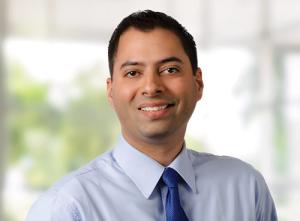 Amul Sathe: Where statewide programs are launched independently of utility programs, utility data access can open the door to a more effective program. Such data allows better participant targeting and increased accuracy in assessing and reporting the program’s impacts and benefits.
Amul Sathe: Where statewide programs are launched independently of utility programs, utility data access can open the door to a more effective program. Such data allows better participant targeting and increased accuracy in assessing and reporting the program’s impacts and benefits.
Investments, policies, and standards vary across regulatory jurisdictions governing how utilities file their investment plans, demonstrate need and prudency, recover costs, and earn on those investments. The trend is toward using sophisticated weather hazard models to project probabilistic risk that different weather hazard types will occur, on what assets they will likely have an impact, and their frequency and intensity. Weather hazards can be highly localized, so predictive models must assess outage risks differently for different geographies and areas of the system, for example, at the electric circuit level.
Utility regulators must assess utility investments, including those contained in various forms of utility resilience plans. Regulators now require that utilities define and report resilience metrics to demonstrate the need for grid investments and measure their effectiveness. Benefit-cost analysis quantifies evidence that an investment's benefits can justify its costs.
Guidehouse's work with utilities to analyze their long-term weather hazard risk exposures and assess their resilience investment plans, has demonstrated that robust BCA frameworks are important in allowing regulators and utilities to reach agreement and approve recovery of investments through rates.
Recently, new technologies are advancing utility approaches to resiliency planning. Utilities can now gather high quality visual data (such as satellite imagery), store large amounts of it, and process it into actionable insights through predictive analytics.
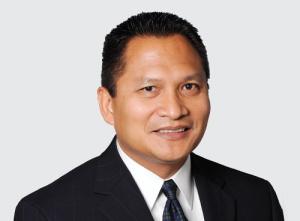 Ed Batalla: In July 2023, FERC issued Order No. 2023, which aims to streamline the generator interconnection process. This was a good start but will not solve the fundamental interconnection problems.
Ed Batalla: In July 2023, FERC issued Order No. 2023, which aims to streamline the generator interconnection process. This was a good start but will not solve the fundamental interconnection problems.
For example, the adoption of AI-driven tools like digital twin technology and machine learning software platforms will raise the bar for resilience investment planning and cost recovery. Many of these solutions are still in their infancy, but exponentially increasing and being validated through real-world application.
At the same time, our utility clients are bolstering their internal risk management functions and embracing resilience as a tent pole for galvanizing long-term corporate growth strategy. If the last ten years were the carbon-mitigation years, the next ten may be remembered for the industry's advances and increased emphasis on climate adaptation, risk management, and resilience strategy.
How can utilities and regulators work in better concert with state-level programs tied to reducing greenhouse gas emissions?
Amul Sathe: The number of state-level programs aimed at reducing greenhouse gas emissions is growing. These new programs funded by federal or state taxes are running adjacent to many long-standing utility-funded energy efficiency programs. The existing programs result in greenhouse gas savings but were originally designed with the energy ratepayer's benefit in mind and are thus optimized to achieve different objectives and metrics.
More than twenty-five states have set energy efficiency goals for utilities, and state utility regulators oversee the achievement of these goals. Coordinated leveraging of strengths is the key to these programs working in concert.
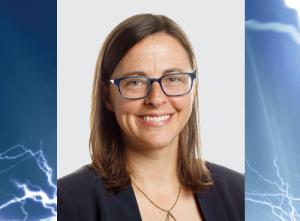 Jenny Hampton: Guidehouse is seeing utilities collaborate with State Energy Offices on the Home Energy Rebates Program and Home Electrification and Appliance Rebate Program under the IRA by participating in stakeholder discussions and offering perspectives on overlapping incentives and program operations.
Jenny Hampton: Guidehouse is seeing utilities collaborate with State Energy Offices on the Home Energy Rebates Program and Home Electrification and Appliance Rebate Program under the IRA by participating in stakeholder discussions and offering perspectives on overlapping incentives and program operations.
The easy option may seem to be braiding state-level program funding with utility program funds to allow the dollars to stretch further. This allows state funds to leverage the existing localized networks of trade allies and contractors, which utilities have built over multiple years, and reduces market confusion from multiple programs from multiple sources.
However, mixing funds with different objectives can lead to downstream headaches in implementation, reporting, and evaluation. For example, state funds often come with broader scope and mandate than utility programs and have specific equity targets. Regulators must create certainty in program policy regarding utility program authority and how to track its impacts.
Where statewide programs are launched independently of utility programs, utility data access can open the door to a more effective program. Such data allows better participant targeting and increased accuracy in assessing and reporting the program's impacts and benefits. This kind of data sharing is only enabled through collaboration with utilities and often requires input or approval from a regulator regarding policies that govern utility customer data protection.
What solutions do you envision for alleviating the transmission queue problem in the U.S. and what can utilities do to expedite distributed energy resource deployments in their territories?
Ed Batalla: The desire to integrate more renewable energy resources in the U.S. energy grid is causing a backlog of generator interconnection requests and associated transmission upgrades, so the processes are not keeping pace with the demand the energy transition is generating. Transmission is the grid's super-highway and can span large distances to bring generation supply from renewable sources — usually from remote areas — to areas where electric demand must be served. The current process of transmission development cannot keep up and is not process capable.
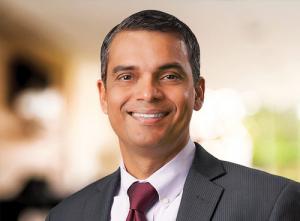 Keshav Sarin: The industry must leverage next-generation security concepts, such as zero trust architecture for its IT/OT networks, focusing on cybersecurity holistically and using the five pillars of security: identity, devices, networks, applications, and data.
Keshav Sarin: The industry must leverage next-generation security concepts, such as zero trust architecture for its IT/OT networks, focusing on cybersecurity holistically and using the five pillars of security: identity, devices, networks, applications, and data.
Transmission needs are often triggered by generation interconnection requests and require mandated studies to ensure proper cost allocation for the new transmission facilities or for upgrades, or both. In July 2023, FERC issued Order No. 2023, which aims to streamline the generator interconnection process. This was a good start but will not solve the fundamental interconnection problems.
Key solutions include:
Creating more interregional coordination for large transmission projects, such as building capacity ahead of time and with incentives from viable market mechanisms.
Tightening alignment between interconnection and transmission planning processes.
 Erik Larson: The DOE Hydrogen Hub Program will lay a strong foundation for a national hydrogen economy, but without strong utility leadership and broad policy support, the Hydrogen Shot could miss its ultimate target.
Erik Larson: The DOE Hydrogen Hub Program will lay a strong foundation for a national hydrogen economy, but without strong utility leadership and broad policy support, the Hydrogen Shot could miss its ultimate target.
Optimizing the process based on the generators' market participation, such as energy-only generators.
Using computing power and advanced techniques or models to reduce the cycle time for studies.
Accelerating the deployment of grid-enhancing technologies to maximize what can be gotten from the existing grid.
On the distribution level, utilities must also improve their efficiency in deploying and integrating DER. The typical approach of service planning on the distribution side is not process capable. Key solutions include:
 Derek Jones: A key challenge to success is sufficient utility resources, such as energy, assets, workforce, and processes, to energize multi-megawatt electric vehicle sites in line with private sector electrification timelines – especially for supply chain fleets.
Derek Jones: A key challenge to success is sufficient utility resources, such as energy, assets, workforce, and processes, to energize multi-megawatt electric vehicle sites in line with private sector electrification timelines – especially for supply chain fleets.
Incorporating DER adoption forecasts into the distribution planning times to anticipate needed upgrades.
Offering dynamic and readily accessible hosting capacity maps posted by the utility.
Streamlining the interconnection process so that prospective customers can self-serve.
What actions are you seeing utilities take in response to the Inflation Reduction Act nearly two years after it was signed into law?
Jenny Hampton: Guidehouse is seeing utilities collaborate with State Energy Offices (SEO) on the Home Energy Rebates Program and Home Electrification and Appliance Rebate Program under the IRA by participating in stakeholder discussions and offering perspectives on overlapping incentives and program operations. While combining state-level program funding with utility program funds seems the easiest way to stretch dollars, mixing funds with different objectives can create problems in implementation, evaluation, and reporting.
 Debbie Brannan: The rise in power demand can be managed effectively by leveraging AI itself. Moreover, the increased demand could lead to innovative solutions in demand response programs, energy efficiency, and grid modernization improving utilities’ services.
Debbie Brannan: The rise in power demand can be managed effectively by leveraging AI itself. Moreover, the increased demand could lead to innovative solutions in demand response programs, energy efficiency, and grid modernization improving utilities’ services.
Utilities want to leverage IRA funds to help meet their own climate and energy program goals, especially in historically underserved and complex customer sectors like multifamily and low- and moderate-income residences. They are also trying to figure out ways to ensure that the IRA programs do not create confusion among customers and their market's workforce.
Collaboration looks different depending on the state and the utility. If these programs are to work together, stakeholders must find ways to coordinate their strengths so they can leverage them.
In some areas of the U.S., utilities have been at the table since day one and are shaping the state's program design alongside the SEO. In other areas, utilities are still waiting for the state to provide a channel for working together or are passively waiting for the SEO plan to be made available.
Whether active collaboration is happening or not, as the SEO plans become clear, utilities are beginning to map IRA HOMES and HEAR offerings to their own programs, so they can identify where alignment will be needed for program operations, such as marketing and engagement with trade allies. The industry is also continuing to work through specific and complex questions, such as attribution of program impacts, health and safety upgrades needed in homes before they can be made efficient or electrified, and how to address significant workforce gaps, both geographic and technological.
Is digitalization happening fast enough at utilities, and are the current cyber protections adequate?
 Robyn Link: Providing access to the treasure trove of customer data utilities collect can help contractors identify which customers will most likely benefit from home energy rebate programs.
Robyn Link: Providing access to the treasure trove of customer data utilities collect can help contractors identify which customers will most likely benefit from home energy rebate programs.
Keshav Sarin: Traditionally, the utility industry has been slow to adapt to the digitalization evolution. Utility business units remain mostly fragmented, leading to a lack of technology adoption organization wide.
Further, existing utility infrastructure and operational processes, networks, and systems have been slow to keep up with changing technology and the cyber threat landscape. Finally, the growth in DER and renewables has led to increased merger and acquisition activities for large utilities, which has caused more pressure on those utilities looking to be efficient and save operations and maintenance costs.
Digitalization is a necessary shift for utilities, and industries can take advantage of technologies to scale and implement state-of-the-art methods that deliver better products at lower prices with higher customer satisfaction. These technologies include lower cost of cloud computing and data storage, ML, and generative AI capabilities. Mature utilities are using these technologies to improve field dispatch operations, asset monitoring, and overall system reliability.
Cybersecurity attacks on all critical infrastructure sectors have increased over the past five years including the notable 2021 Colonial Pipeline ransomware attack. The International Energy Agency has reported that the critical gas and electricity infrastructure sectors were subjected to an average of 504 weekly attacks per organization in 2020, 736 in 2021, and 1,101 in 2022.
 Latisha Younger-Canon: In reality, Order 2222 in and of itself is not going to be the catalyst for change. Rather the catalyst is the rapid evolution of technology. Like a tsunami, it is coming and will be unstoppable.
Latisha Younger-Canon: In reality, Order 2222 in and of itself is not going to be the catalyst for change. Rather the catalyst is the rapid evolution of technology. Like a tsunami, it is coming and will be unstoppable.
The AI and ML tools that cyber adversaries deploy are likely to increase the number, type, and success of attacks, so internalizing the lessons learned from high-profile cyberattacks and prioritizing cybersecurity by increasing investments are not enough. The industry must leverage next-generation security concepts, such as zero trust architecture for its IT/OT networks, focusing on cybersecurity holistically and using the five pillars of security: identity, devices, networks, applications, and data.
Further, the industry must move to a security always-on model of cybersecurity controls implementation in which cyber controls are automatically and continuously checked. Finally, the industry will benefit from improving visibility for its IT and OT systems by implementing a single pane of glass to monitor security operations.
There is no silver bullet for cybersecurity. Rather, the solution lies in a combination of strong detective and preventive processes and tools, and a drive to evolve continuously with the changing threat landscape.
With the finalized announcement of the Hydrogen Hubs late last year, what can utilities and regulators do to help achieve the 2030 clean hydrogen production goals?
Erik Larson: Clean hydrogen is an important tool in achieving a net-zero emissions future. To accelerate market development, the U.S. Department of Energy launched the Hydrogen Shot initiative in 2021 with an ambitious "1 1 1" goal to reduce the cost of clean hydrogen by eighty percent to one dollar per one kilogram in one decade, tapping into ten million metric tons of clean hydrogen production potential.
 Nathan White: By placing customers at the heart of every decision, utilities can unlock benefits that extend beyond the balance sheet and ensure they succeed in the industry’s dynamic landscape.
Nathan White: By placing customers at the heart of every decision, utilities can unlock benefits that extend beyond the balance sheet and ensure they succeed in the industry’s dynamic landscape.
Meeting production goals requires a robust supply of reliable and low-cost clean energy coupled with long-term demand offtake certainty. Creating a viable marketplace requires customer education, pricing transparency, and economic distribution channels to accelerate demand.
Achieving this bold vision requires a fundamental shift in the energy landscape. Electric and gas utilities can play an essential role throughout this supply chain.
Customer-centric utilities should proactively engage with customers to understand their needs and explore innovative demand-side solutions. Utilities should engage with upstream producers to supply clean energy for hydrogen production, attracting a key source of new load growth with grid planning implications.
Transporting low-cost clean hydrogen from production sites to high-impact end-use sectors at scale (beyond co-located facilities) requires substantial investment in pipeline and storage infrastructure. Utilities can leverage or repurpose existing pipeline networks and rights-of-way to drive down the cost of high-volume distribution as the market matures.
 Shaun Fernando: Utilities must not be simply a labor market’s end users, but they must be active agents in setting demand and defining the marketplace’s parameters for workers’ relevant skills and experiences.
Shaun Fernando: Utilities must not be simply a labor market’s end users, but they must be active agents in setting demand and defining the marketplace’s parameters for workers’ relevant skills and experiences.
To make this vision a reality, regulators and policymakers must work collaboratively with the nation's utilities to establish a regulatory framework that encourages participation, removes risk from utility infrastructure investments, streamlines permitting, enables innovative rate design, and promotes longer-term opportunities to decarbonize the power sector.
The DOE Hydrogen Hub Program will lay a strong foundation for a national hydrogen economy, but without strong utility leadership and broad policy support, the Hydrogen Shot could miss its ultimate target.
The Biden administration is pushing for vehicle electrification across the country. Do you think utilities and private industry can meet these goals? What key themes or challenges are you seeing among utilities working to meet the electric vehicle charging goals put forth?
Derek Jones: The transition of fleets, facilities, and fuels to new powertrains is transforming how we move people and goods around the globe, so the traditional boundaries of how vehicles are fueled, stored, and utilized are being redefined. National and state policies are critical to this mobility transition.
The Biden administration set a goal of fifty percent light duty electric vehicle sales by 2030 and backed that with new U.S. Environmental Protection Agency vehicle emissions standards to drive electric vehicle supply. Congress approved multiple electric vehicle charging infrastructure programs, including the five-billion-dollar National Electric Vehicle Infrastructure Formula program to roll out five hundred thousand charging stations.
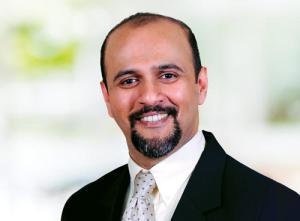 Aditya Ranade: A typical integrated resource plan looks out 15 years, but a climate risk disclosures requirement at the enterprise level may necessitate a 30-year outlook.
Aditya Ranade: A typical integrated resource plan looks out 15 years, but a climate risk disclosures requirement at the enterprise level may necessitate a 30-year outlook.
These federal policies complement state policies, such as California's requirement for a hundred percent zero emission vehicle sales by 2035. Today, seventeen states and the District of Columbia have committed to following California's lead. Automakers, for their part, have committed to phasing out internal combustion engines in the next few decades, and in some cases, by 2030 (Volvo), in line with Biden's goal.
While policies are pushing EVs and infrastructure, utilities and private industry have critical roles to play. The NEVI program is an essential nationwide proof-of-concept for public charging infrastructure — but private investment BTM, alongside utility investment to the meter, are table stakes for ensuring that the mobility transition and Biden's goals succeed.
A key challenge to success is sufficient utility resources, such as energy, assets, workforce, and processes, to energize multi-megawatt electric vehicle sites in line with private sector electrification timelines — especially for supply chain fleets.
To achieve the infrastructure innovation marvel that is the mobility transition, utilities, regulators, private industry, and interested parties must not only collaborate, but they must also be willing to compromise and make mistakes in the interest of failing fast, so they can forge forward — and together. If investment in the mobility transition remains strong — both public and private — so does the prospect of a cleaner mobility future.
In what ways do you see AI having an impact on utilities over the next five to ten years? What are specific use cases you could see being piloted in the shorter term? On the demand side, how concerned should utilities be about the forecast power demand of AI for commercial usage?
 Steve Waller: C&I consumers are facing the twin challenges of navigating the incredible surge in demand from their customers and the emerging imperative around decarbonization and electrification.
Steve Waller: C&I consumers are facing the twin challenges of navigating the incredible surge in demand from their customers and the emerging imperative around decarbonization and electrification.
Debbie Brannan: AI is set to bring transformative change to utilities over the next five to ten years and they should embrace the opportunities it presents. Two key areas of impact will be:
Enhanced grid management, because AI can predict and optimize load distribution in real time, reducing operational costs and achieving a more stable and resilient grid.
Predictive maintenance, because AI-powered systems can analyze vast amounts of data from sensors and meters, predicting potential failures before they occur, thus reducing downtime and maintenance costs.
In the shorter term, utilities should consider piloting customer service use cases that use AI-powered chatbots and virtual assistants to handle customer inquiries and complaints, leading to improved customer satisfaction and reduced operational costs. Testing high value use cases in the near term is an important way for utilities to begin demonstrating value and viability.
For utilities to fully recognize the business value AI can bring to their organizations, however, they must also invest in comprehensive strategic planning and capability assessments, upskilling and training their staff, and establishing AI governance policies and controls — as well as ethical frameworks.
The increasing use of AI in commercial settings on the demand side will indeed lead to higher power demand, particularly as AI applications involving deep learning and large-scale data processing are scaled up. Utilities should proactively engage with businesses deploying AI technologies, technology providers, and policymakers to ensure the grid infrastructure can support the increased demand from AI applications.
They should view this as an opportunity rather than a concern. The rise in power demand can be managed effectively by leveraging AI itself. Moreover, the increased demand could lead to innovative solutions in demand response programs, energy efficiency, and grid modernization improving utilities' services. Therefore, while utilities should be mindful of AI's forecast power demand, they should embrace the opportunities it presents.
How can utilities better encourage their customers to take advantage of state and federal home energy efficiency programs?
Robyn Link: With billions of home energy efficiency and electrification rebate dollars flowing from the federal government to SEOs, utilities are positioned to transform the energy industry by collaborating with SEOs to leverage their mature customer program infrastructures for maximum customer engagement and participation in home energy rebate programs. They can build out in three key areas:
Leverage contractors' existing networks and grow them. Contractors can help scale and accelerate in-field activities. They are often the first point of contact and already in communities introducing and providing customer support for energy efficiency programs. Utilities can help contractors prepare for customers by supporting outreach, education, and training, making federally required program tools available, and providing opportunities for the certifications required for delivering them.
Providing access to the treasure trove of customer data utilities collect can help contractors identify which customers will most likely benefit from home energy rebate programs. Contractors can use this data to determine which calculation methodology provides the greatest savings for customers and the grid. Utilities can also work with SEOs to establish security policies and processes for customer data consent and privacy.
To increase participation, make the customer experience easy. Utilities can add pathways to their existing application processes that allow for stacking and braiding of funds with existing utility and federal programs. Customers will have options for comprehensive energy efficiency improvements and can achieve greater energy savings.
Utilities can also work with SEOs, community-based organizations, and housing authorities on coordinated outreach and unified messaging that explains how customers can best access and benefit from the funds. This is especially important for ensuring that limited income customers have access to programs that would benefit them, since they may not have the time or availability to find these programs on their own.
With programs in the market, utilities are in an ideal role for meeting their customers where they are. They are best positioned to make these new rebate dollars more accessible, reducing energy costs and burdens for their limited income customers, while making their homes more efficient, comfortable, and future ready.
How effective will FERC Order 2222 be at opening wholesale power markets to DER aggregations, and what will prevent its success?
Latisha Younger-Canon: When FERC issued Order 2222 in 2020, many considered the ruling a historic change enabling DER adoption to scale at a significant rate. Since that time, several barriers related to transmission scaling and distribution planning have led to sluggish growth, holding back the energy transition. While progress has been meaningful, Guidehouse is still not seeing transformative change.
In reality, Order 2222 in and of itself is not going to be the catalyst for change. Rather the catalyst is the rapid evolution of technology. Like a tsunami, it is coming and will be unstoppable. Even without FERC 2222, Guidehouse has seen and continues to see the implementation of DER occurring in various segments. For utilities, the result is a limited window of opportunity for understanding and determining where best to position their organizations amid these changes.
Beyond reliability and resilience, utilities must balance their customers' needs with their businesses' interests, so understanding the requirements of FERC 2222, its potential business impact, and what would be most advantageous for a utility and its customers are critical to the utility's future health. For this reason, the consequences of inaction could be serious.
Guidehouse has been working to identify the challenges facing FERC 2222 implementation and supporting our utility clients in developing strategic plans for acting as an aggregator and market participant — allowing each to position its business as a player in the emerging DER landscape and extend its role beyond that of a traditional distribution utility, potentially realizing market revenue from participation.
This approach ties together all aspects of the business — people, process, policy, and technology — to efforts to integrate aggregated DER into wholesale markets. Ultimately, the success of FERC 2222 will be contingent on the position utilities assume as the technological tide rolls in.
What relatively modest investment could utilities make that would have the greatest impact on their long-term success?
Nathan White: In the ever-evolving utility landscape, a strategic shift toward a customer-centric mindset can unlock long-term success. This approach places customers at the heart of every decision, process, and interaction, and transforms the traditional focus on reliability and affordability into a holistic view of customer needs.
The first step in this cultural shift is fostering a mindset in which employees view their work through the lens of customer impact. Leaders must invest in their staff, ensuring they have the necessary processes, organizational structure, and authority to apply new technologies and understand evolving customer needs. This shift from viewing customers as ratepayers to a customer-obsessed culture requires deliberate effort across the enterprise.
As customers make progress on their decarbonization journeys, utilities are uniquely positioned to understand their needs. Customer analytics can provide insights into customer behavior, preferences, and pain points, allowing utilities to develop new offerings that meet emerging needs. This data-driven approach can help utilities stay ahead of the curve and ensure they can balance the many competing priorities and constraints on the grid.
With an increasing amount of customer data available, investing in areas such as process improvement, change management, and training can enable teams to make efficient use of data. Additionally, incorporating roles such as data scientists, business analysts, and leveraging low code platforms in business, ensures teams have the necessary skills and resources to maximize the value of customer data.
Promoting cross-functional collaboration and breaking down historical silos can also play a significant role in this cultural shift. By creating common goals and cross-departmental metrics, utilities can ensure a more cohesive and customer-focused approach.
Investing in a customer-centric culture is more than just a buzzword; it is a strategic shift that can position utilities for long-term success. By placing customers at the heart of every decision, utilities can unlock benefits that extend beyond the balance sheet and ensure they succeed in the industry's dynamic landscape.
What can utilities do to prepare their regions for the workforce they will need in the future? What ancillary benefits have you seen from these types of programs?
Shaun Fernando: The main change to future regional workforces will be the continued decoupling of labor productivity from economic growth, due to continued adoption of technological innovation in multiple industries and sectors. This is exacerbated by AI.
While this decoupling will create economic benefits and increase shareholder value, it potentially leaves serious questions about the utilization and fulfilment of human capital at the regional and community levels. Future workforces must therefore work alongside AI and be flexible enough to reconfigure and find new roles for labor's skills and experience.
This reconfiguration will require a workforce of generalists, who have transferable technical skills and can work at the business-technology-customer interface. This workforce will need sufficient technical skills to modify — or tinker with — software applications, enough business acumen to regulate workflows and manage projects, and plentiful soft skills to flexibly respond to changing conditions or customer needs.
Utilities have a unique role to play in workforce development, from the enterprise standpoint of their own workforces and from the perspective of skills uplift in the communities they serve.
From an enterprise standpoint, utility workforces are presently structured largely around a core of high utilization, long-serving role-focused, and task-focused workers, supplemented by lower utilization contract workers for specialized needs.
Future utility workforces must have a lower cost, fungible workforce that is cross trained across multiple disciplines and tasks that can complement technology tools and build in resilience through role switching.
From a community standpoint, utilities play the same role that other industries and employers do: They define the skills, competencies, and body of knowledge required for employment. The larger systemwide challenge is a misalignment between the skills output from K-12 and higher education institutions with those skills an industry actually needs.
Utilities can address this misalignment by, for example, sponsoring tertiary or higher education programs to codesign curricula and functional experiences representative of the types of skills needed in the workplace. They can also provide internship or placement-year opportunities for those students with relevant technical backgrounds.
A key barrier to the energy transition is the limited supply and elasticity of trained workers necessary to design, build, and operate future technology and management systems. The adoption of technology tools that offset human labor compounds this challenge.
In response, utilities must not be simply a labor market's end users, but they must be active agents in setting demand and defining the marketplace's parameters for workers' relevant skills and experiences.
This is a new proposition for many utilities, but — as with many other paradigm shifts — it is one for which they may need to step away from orthodoxy and work asymmetrically into a complex and fragmented ecosystem that can ultimately deliver a technology-literate, fungible, and elastic workforce.
What steps should utilities take today to harden their infrastructure and better prepare for extreme weather?
Aditya Ranade: Utilities should begin by mapping what extreme weather events — floods, hurricanes, storms, wildfires, and extreme heat — are most consequential to their territories by correlating their operational data with historical weather data.
The next step is forecasting how extreme weather events are likely to change in different times. Determining the appropriate time for each decision is critical. For example, a typical integrated resource plan looks out fifteen years, but a climate risk disclosures requirement at the enterprise level may necessitate a thirty-year outlook.
After determining the appropriate time and relevant hazards, utilities can decide from an array of available public and private tools for natural hazard forecasts. After developing those forecasts, utilities should determine which of their assets are most vulnerable and which adaptive actions make the most cost-benefit sense.
Undertaking these foundational steps will set up utilities for success whether they are filing a resilience plan, a rate case, a resource plan, or an enterprise-wide climate-risk disclosure.
How can C&I users reduce their impact on the grid during their electrification process? How are you seeing utilities manage this increase in demand across the board?
Steve Waller: C&I consumers are facing the twin challenges of navigating the incredible surge in demand from their customers and the emerging imperative around decarbonization and electrification. From electric battery production to microchip fabrication, Guidehouse is seeing unprecedented energy demand from all sectors of the economy.
Recently, FERC has estimated that electricity demand will increase by 4.7 percent over the next five years, growing by more than thirty-eight gigawatts. To respond to the market need while continuing to decarbonize and electrify operations, C&I consumers must take a number of actions including:
Acting now; do not wait for others to move first.
Adopting an end-to-end value chain approach.
Accelerating the implementation of low carbon tech and infrastructure.
Building green premiums into financing and investment requirements.
Even before addressing the question of increasing demand, remember that running a utility's operation is challenging, especially with the aging infrastructures often in place, and that most of Guidehouse's clients in the Midwest are facing complex regulatory environments.
For those reasons, the industry is still figuring out how to balance supporting dramatic increases in demand with driving the transition to clean energy. A few common themes emerging across Guidehouse's clients are:
Doubling down on grid modernization.
Strengthening risk, reliability, and resiliency analytics.
Aligning supply chain requirements and expectations in the context of CAPEX planning.
Investing in more rigorous system planning.
Strengthening partnerships across the energy value chain — including with regulators.
. . .
As the director leading Guidehouse's Energy System Decarbonization Solutions team, Danielle Vitoff leads teams developing decarbonization and climate resilience solutions for utilities, Fortune 100 companies, and U.S. cities. Danielle constructs strategies that position clients for success in the complex and changing landscape of climate and sustainability. Danielle is adept at managing diverse stakeholder networks, exposing underlying drivers, and driving forward strategies with wide support. Notable engagements include leading the development of the San Antonio Climate Action and Adaptation Plan, building decarbonization roadmaps for multiple natural gas utilities, serving as the lead author on a first-of-its-kind report for the American Gas Foundation: "Building A Resilient Energy Future: How the Gas System Contributes to US Energy System Resilience," and the development of a science-based target for The Coca-Cola Company.
Peter Shaw is a director in the Energy, Sustainability, and Infrastructure segment, where he leads a team of experts in Regulatory and Pricing Strategies. His clean energy transition advisory work for electricity and gas utilities focuses on regulatory compliance and innovation strategies for achieving greenhouse gas mitigation, climate risk management, and corporate resilience.
Previous to joining Guidehouse, Peter's energy industry work included senior strategy roles at EY-Parthenon, J.D. Power & Associates, and cleantech startups in demand response, AI/machine learning, and industrial energy services.
Amul Sathe is a director in Guide-house's Western Market Region, primarily serving clients in California. For more than fifteen years he has helped utility regulators and state energy offices advance policies, markets, and technologies to achieve ambitious carbon reduction goals. Amul oversees the development of forecasting models, analytical tools, and market studies that are used to inform energy goal setting, grid planning, R&D investment decisions, and program design in the fifth largest economy in the world.
Ed Batalla is a director in Guidehouse's Energy, Sustainability, and Infrastructure segment, delivering full lifecycle solutions to transform energy systems, markets, transmission, and distribution planning & operations processes, and infrastructure, assets, and technologies for a more sustainable, resilient, and secure energy system. Ed has a strong track record that spans more than thirty years in the electric utility and energy industry environments and associated technologies. Ed assists energy, utility, and governmental clients in crafting their energy transition strategy, vision, and mission, leveraging the integration of new technologies to adopt their business and organization.
Jenny Hampton is a partner at Guidehouse with twenty years of experience helping utilities and governments design, deliver, and evaluate their customer-facing clean energy programs. She currently leads the Guidehouse Customer Program Evaluation team and directs the evaluations of several large U.S. utility customer program portfolios. Before joining Guidehouse in 2011, Jenny spent four years with the Colorado State Energy Office, where she oversaw the office's public outreach and energy rebate program marketing strategies during the Recovery Act.
Keshav Sarin leads the cybersecurity and compliance solutions in Guidehouse's Energy, Sustainability, and Infrastructure segment, helping clients in commercial, state, local government, and federal agencies with cybersecurity strategic and implementation guidance. Keshav brings more than twenty-eight years of professional experience in a variety of cybersecurity roles related to risk management, information systems development, and security controls management.
Erik Larson is a director in Guidehouse's Energy, Sustainability, and Infrastructure segment, leading decarbonization go-to-market initiatives such as clean hydrogen, e-mobility, and other sustainable infrastructure solutions. With a passion for building transformational energy solutions, Erik partners with utility executives to develop and operationalize customer-centric strategies and achieve sustainable excellence.
Derek Jones is a director in Guide-house's Energy, Sustainability, and Infra-structure segment, where he leads the Mobility/EV Service. Derek has more than fifteen years of experience in the transportation and energy sectors. Derek manages teams bringing direct industry experience and proven consulting expertise, to develop outcome-based solutions for a sustainable mobility future. He supports market actors across the ecosystem — including utilities and energy providers, automakers, investors, and governments — in developing and delivering innovative mobility programs, products, and services.
Debbie Brannan, Ph.D., is a director in Guidehouse's global Energy, Sustainability, and Infrastructure practice. As a leader of the Data & Analytics Solutions team, she brings more than ten years of experience developing analytics solutions that enable energy companies and governments to make data-driven decisions amidst a rapidly changing industry and a digital revolution. Debbie has expertise in customer-facing energy programs, supporting clients in delivering programs with a focus on emerging technology, including EVs, storage, and the IoT.
Robyn Link is a director within the Energy, Sustainability, and Infrastructure segment, where she leads the Customer and Citizen Programs Design and Delivery teams. She has twenty-one years in the energy industry. Robyn has partnered with eighty-plus utility companies (IOUs, Co-ops, and Municipals) in North America to create and deliver new, transformational load management and customer engagement solutions that drive results and resolve significant business challenges for utilities.
Latisha Younger-Canon works at the forefront of customer experience across nearly all aspects of the energy industry. She is deeply invested in understanding what makes customers and clients tick, how to draw out feedback, find actionable solutions, and solve real-world problems. Her experience in energy covers both regulatory and non-regulatory utility operations. She is an expert in demand-side management programs, having worked extensively in program evaluation, design, and implementation for more than thirty utility clients. Currently, she spends her time leading business development efforts tied to customer programs and initiatives and overseeing delivery operations for large-scale energy provider projects in the South Market of the Energy, Sustainability, and Infrastructure segment at Guidehouse.
Nathan White is a director at Guide-house with fifty years of experience in the successful management of complex program deliveries, with a focus on emerging technologies, sustainability, energy transition, operational efficiency, intelligent products, and analytics. An expert in transformational projects, he brings a diverse background to co-create holistic and innovative solutions that drive meaningful and measurable impact.
Prior to his career in consulting, Nathan oversaw the design and management of billion-dollar capital programs and portfolios, for utility clients, with a multinational engineering firm. Nathan received his BS in Industrial Engineering from Clemson University.
Shaun Fernando is a partner at Guide-house, leading strategy and economics consulting services, working with governments, utilities, transportation agencies, and the private sector on a range of strategic and public policy initiatives — specifically in the areas of economic development and industrial policy, climate change and net-zero decarbonization, and broadband and connected communities. Shaun sits on the eight-member Economic Roundtable for the Southern California Association of Governments, the federally mandated planning organization for the region. Shaun is also a Fellow at the Atlantic Council, advancing the council's agenda on the net-zero economy and social capital.
Aditya Ranade has eighteen-plus years of experience in public and private sectors serving corporations, utilities, investors, and government officials. Currently he leads the Infrastructure Resilience Solutions team for Guide-house serving energy providers and he specializes in natural hazard/climate resilience, grid modernization, and regulatory policy. He holds a PhD in Material Science and Engineering from Case Western Reserve University and an MBA from Babson College.
Steve Waller is a transformational strategy, operations, and technology executive who works with management teams and boards of directors to drive sustainable value through growth strategies, operating model designs, structural cost resets, and technology-driven transformations. Most recently, Steve led Accenture's Midwest Resources Industry Strategy & Consulting business. Beyond the energy value chain, Steve has worked with industrial, chemicals, and manufactured products clients on large-scale M&A and complex transformations in North America, Europe, and Latin America.


